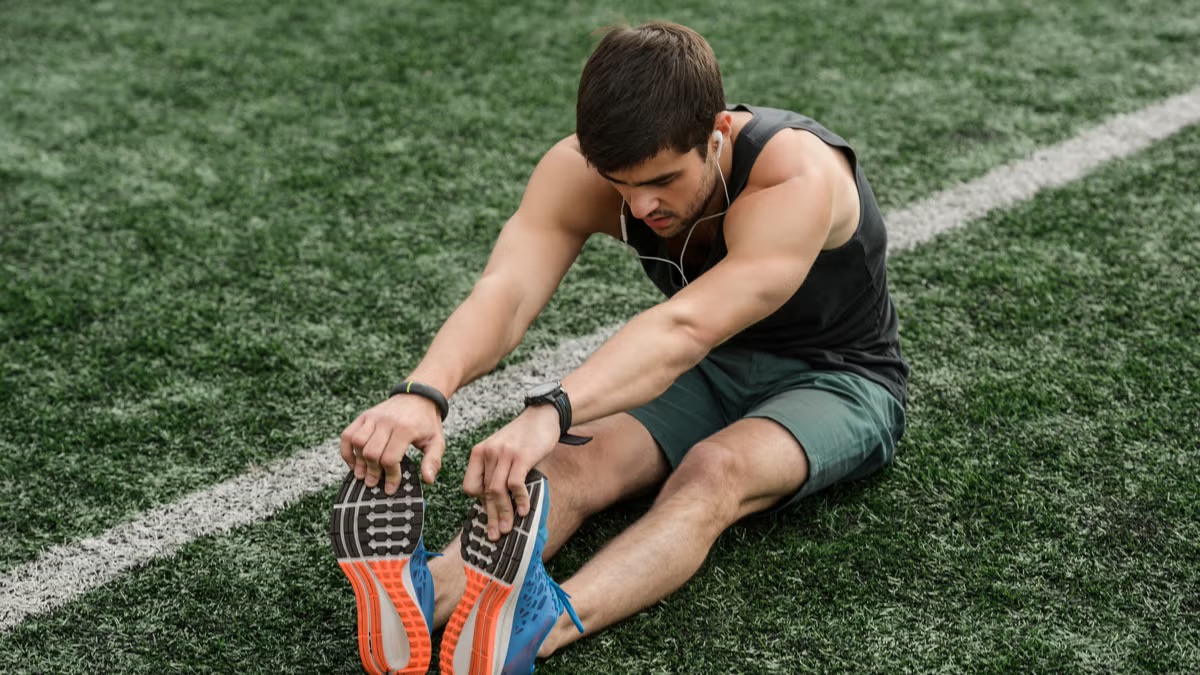In the pursuit of athletic excellence, effective recovery strategies are just as crucial as rigorous training. This article explores a holistic recovery approach that integrates physical, mental, and emotional well-being to support athletes in optimizing their performance. By understanding the importance of sleep, nutrition, mindfulness, and active recovery, athletes can enhance their ability to recover from training and competitions, reduce the risk of injury, and improve overall performance.
By incorporating these strategies into their routines, athletes can not only boost their recovery processes but also foster resilience and maintain their physical and mental health. This comprehensive guide provides actionable insights and practical techniques to help athletes achieve sustainable success in their sports endeavors.
In this article you will find:
Holistic Recovery Approaches for Optimal Performance
Achieving peak performance as an athlete is not solely about rigorous training and skill enhancement; it also heavily relies on effective recovery strategies. A holistic recovery approach integrates physical, mental, and emotional well-being to support athletes in their journey towards optimal performance. This comprehensive perspective acknowledges that recovery is as critical as training itself and involves various techniques and practices that promote overall health and resilience.
Understanding Holistic Recovery
Holistic recovery goes beyond traditional rest and rehabilitation methods. It emphasizes the importance of addressing all aspects of an athlete’s life, including their physical state, mental health, nutrition, and lifestyle choices. By adopting a holistic recovery approach, athletes can enhance their ability to recover from training and competitions, reduce the risk of injury, and improve their long-term performance.
Key Components of a Holistic Recovery Strategy
- Physical Recovery: Incorporating techniques like massage therapy, foam rolling, and stretching can help alleviate muscle tension and soreness. Regularly scheduled rest days and active recovery sessions, such as light swimming or yoga, can also promote blood flow and expedite recovery.
- Nutritional Support: Nutrition plays a pivotal role in recovery. Athletes should focus on a balanced diet rich in whole foods, lean proteins, healthy fats, and plenty of fruits and vegetables. Consider consulting with a sports nutritionist to tailor dietary choices that support recovery and fuel performance.
- Mental Well-being: Mental recovery is often overlooked but is equally essential. Practices such as mindfulness, meditation, and visualization can help athletes manage stress and improve focus. Engaging in relaxation techniques can aid in achieving a balanced mental state, which is vital for optimal performance.
- Emotional Support: Building a strong support network is crucial for emotional recovery. Surrounding oneself with family, friends, coaches, and teammates can provide encouragement and motivation. Discussing challenges and celebrating achievements fosters a positive mindset, which is vital for long-term success.
Integrating Holistic Practices into Daily Routines
To truly benefit from a holistic recovery approach, athletes should consider integrating these practices into their daily routines. Here are some actionable steps:
- Schedule Recovery Time: Just as training sessions are scheduled, recovery practices should be part of the daily agenda. Allocate time for stretching, foam rolling, and relaxation exercises.
- Prioritize Sleep: Sleep is a cornerstone of recovery. Aim for 7-9 hours of quality sleep each night to allow the body to repair and rejuvenate.
- Mindfulness Practices: Start or end the day with a few minutes of mindfulness or meditation. This can help clear the mind and prepare for both training and competition.
- Healthy Eating Habits: Prepare meals in advance to ensure nutritious options are readily available. Focus on post-workout meals that include carbohydrates and proteins to replenish energy stores and support muscle repair.
Seeking Professional Guidance
For athletes looking to optimize their recovery, seeking the guidance of professionals can be beneficial. Sports psychologists, nutritionists, and physiotherapists can provide tailored advice and strategies that align with individual needs and goals. Research from reputable sources, such as this study on recovery strategies, highlights the effectiveness of holistic approaches in enhancing athletic performance.
In conclusion, adopting a holistic recovery approach is essential for athletes aiming for peak performance. By addressing physical, mental, and emotional aspects of recovery, athletes can create a sustainable path toward success, ensuring they not only perform at their best but also maintain their well-being throughout their careers.
Importance of Sleep and Nutrition in Athletic Recovery
For athletes striving to enhance their performance, the significance of sleep and nutrition cannot be overstated. These two pillars of recovery not only support physical health but also play a crucial role in mental acuity, emotional stability, and overall athletic success. By prioritizing these elements, athletes can effectively optimize their recovery processes and unlock their full potential.
The Role of Sleep in Recovery
Sleep is a fundamental component of recovery, providing the body with the necessary time to repair and rejuvenate. During sleep, several physiological processes occur, including:
- Muscle Repair: Sleep promotes the release of growth hormone, which aids in muscle repair and growth. This is particularly important after intense training sessions that can lead to muscle microtears.
- Energy Restoration: Adequate sleep replenishes glycogen stores, ensuring that athletes have the energy they need for subsequent workouts and competitions.
- Hormonal Balance: Sleep helps regulate hormones that are crucial for stress management, appetite control, and metabolic function, all of which affect an athlete’s performance and recovery.
Studies have shown that athletes who prioritize sleep experience improved performance metrics, including reaction times, endurance, and strength. For instance, a study published in the Journal of Clinical Sleep Medicine demonstrated that extending sleep duration significantly enhanced athletic performance in collegiate basketball players.
Nutritional Strategies for Optimal Recovery
Alongside sleep, nutrition is a key player in an athlete’s recovery strategy. The right dietary choices can accelerate recovery, enhance performance, and reduce the risk of injuries. Here are some essential nutritional strategies:
- Post-Workout Nutrition: Consuming a balanced meal or snack within 30 minutes to two hours post-exercise is critical. This meal should include both carbohydrates and proteins to replenish glycogen stores and support muscle repair. For example, a smoothie made with banana, protein powder, and almond milk can be an excellent recovery option.
- Hydration: Staying hydrated is vital for recovery. Dehydration can lead to decreased performance, fatigue, and prolonged muscle soreness. Athletes should aim to drink water consistently throughout the day and consider electrolyte-rich beverages after intense workouts.
- Balanced Diet: A diet rich in whole foods—such as lean proteins, healthy fats, whole grains, fruits, and vegetables—provides the necessary vitamins and minerals to support overall health and recovery. Antioxidant-rich foods, like berries and leafy greens, can help reduce inflammation and oxidative stress.
Creating a Personalized Recovery Plan
To maximize the benefits of sleep and nutrition, athletes should consider developing a personalized recovery plan. This plan can include:
- Sleep Schedule: Establish a consistent sleep routine by going to bed and waking up at the same time each day. Aim for 7-9 hours of quality sleep.
- Meal Planning: Prepare meals in advance to ensure that nutritious options are available post-workout. Tracking macronutrients can help athletes meet their specific recovery needs.
- Consultation with Professionals: Working with a sports nutritionist can provide tailored dietary advice based on individual goals, training intensity, and body composition.
In conclusion, understanding the importance of sleep and nutrition in athletic recovery is essential for any athlete looking to improve performance and longevity in their sport. By prioritizing these elements, athletes can ensure that they are not only recovering effectively but also setting themselves up for success in their training and competitions.
Mindfulness and Mental Resilience Techniques for Athletes
In the competitive world of sports, physical prowess is only part of the equation. The mental aspect of performance is equally, if not more, crucial. Mindfulness and mental resilience techniques are becoming increasingly recognized as essential tools for athletes seeking to enhance their performance and cope with the pressures of competition. By cultivating a strong mental game, athletes can improve focus, reduce anxiety, and bounce back from setbacks more effectively.
The Power of Mindfulness in Sports
Mindfulness is the practice of being fully present in the moment, allowing individuals to observe their thoughts and feelings without judgment. For athletes, mindfulness can provide a range of benefits, including:
- Enhanced Focus: Mindfulness training helps athletes concentrate on their performance by reducing distractions. Techniques such as breath awareness can bring attention back to the present, improving execution during critical moments.
- Stress Reduction: Engaging in mindfulness practices can lower stress levels, which is vital for performance, especially in high-pressure situations. Studies have shown that mindfulness meditation can significantly reduce anxiety among athletes.
- Improved Emotional Regulation: Mindfulness encourages athletes to recognize and manage their emotions, allowing them to maintain composure during competitions. This emotional stability can be the difference between winning and losing.
To incorporate mindfulness into training, athletes can engage in practices such as guided meditation, yoga, or even simple breathing exercises before and after workouts. Research from the National Institutes of Health supports the efficacy of mindfulness in enhancing athletic performance.
Building Mental Resilience
Mental resilience is the ability to adapt to challenges and recover from setbacks. In sports, resilience is crucial as athletes often face injuries, losses, and other obstacles. Here are effective techniques to build mental resilience:
- Goal Setting: Establishing clear, achievable goals can provide direction and motivation. Athletes should set both short-term and long-term goals, focusing on progress rather than perfection.
- Positive Self-Talk: Encouraging internal dialogue can improve confidence and reduce negative thoughts. Athletes should practice affirmations and remind themselves of past successes to reinforce a positive mindset.
- Visualization: This technique involves imagining successful performance in various scenarios. By visualizing success, athletes can mentally prepare for competitions and build confidence in their abilities.
- Reflection and Learning: Embracing failures as learning opportunities is vital for resilience. Athletes should take time to reflect on their performances, identify areas for improvement, and celebrate their progress.
Practical Applications of Mindfulness and Resilience Techniques
Integrating mindfulness and mental resilience techniques into an athlete’s routine can enhance both training and competitive performance. Here are practical applications:
- Daily Mindfulness Practice: Dedicate at least 10 minutes each day to mindfulness meditation or breathing exercises. This practice can help athletes stay grounded and focused during training.
- Pre-Competition Rituals: Develop a consistent pre-competition routine that includes mindfulness exercises to calm nerves and enhance focus. This can include visualization and breathing techniques.
- Resilience Training: Incorporate mental resilience training sessions into regular practice. This can involve discussing challenges faced in previous competitions and strategizing on how to approach them differently in the future.
Ultimately, the integration of mindfulness and mental resilience techniques into an athlete’s training regimen can lead to improved performance and a more fulfilling sports experience. By focusing on both the mind and body, athletes can achieve a holistic approach to their training, paving the way for sustained success.
Incorporating Active Recovery into Your Training Routine
Active recovery is an essential component of a comprehensive training regimen, allowing athletes to recover while still engaging in physical activity. Unlike passive recovery, which involves complete rest, active recovery incorporates low-intensity exercises that promote blood flow, reduce muscle soreness, and enhance overall recovery. This approach not only aids in physical recuperation but also helps athletes maintain their fitness levels and mental focus.
What is Active Recovery?
Active recovery refers to engaging in low-intensity physical activities following intense workouts or competitions. These activities are designed to keep the body moving without placing excessive strain on the muscles. Common forms of active recovery include:
- Walking or Light Jogging: Gentle movements promote blood circulation, which helps flush out metabolic waste and deliver nutrients to recovering muscles.
- Swimming: The buoyancy of water provides a low-impact environment that is easy on the joints while still allowing for a full-body workout.
- Yoga or Stretching: These practices enhance flexibility, reduce muscle tightness, and promote relaxation, making them excellent choices for active recovery.
- Cycling: Riding a stationary bike or cycling at a leisurely pace allows for cardiovascular benefits without the intensity of a full workout.
Benefits of Active Recovery
Incorporating active recovery into a training routine offers a myriad of benefits, including:
- Improved Blood Circulation: Light activities increase blood flow, which helps remove lactic acid and other toxins from the muscles, speeding up recovery.
- Reduced Muscle Soreness: Engaging in low-intensity movements can alleviate delayed onset muscle soreness (DOMS) by promoting active engagement of muscle fibers.
- Maintained Fitness Levels: Active recovery allows athletes to stay physically engaged, ensuring they do not lose fitness gains during recovery periods.
- Enhanced Mental Well-being: Light activity can elevate mood and reduce stress, providing a mental break from high-intensity training and competition.
How to Incorporate Active Recovery into Your Routine
- Schedule Recovery Days: Designate specific days for active recovery within your weekly training schedule. This can be as simple as alternating high-intensity workout days with low-intensity activity days.
- Listen to Your Body: Pay attention to how your body feels. If you experience fatigue or soreness, opt for a more extended active recovery session to allow for adequate healing.
- Mix It Up: Variety is key. Incorporate different forms of active recovery, such as swimming one day and yoga the next, to keep things fresh and enjoyable.
- Set Goals: Establish specific goals for your active recovery sessions, such as improving flexibility or increasing distance in low-intensity cardio activities.
Examples of Active Recovery Workouts
Here are a few sample workouts to inspire your active recovery sessions:
- Yoga Flow: A 30-minute gentle yoga session focusing on stretching major muscle groups and breathing techniques.
- Leisurely Bike Ride: A 45-minute ride at a comfortable pace, ideally on flat terrain to minimize strain.
- Walking Circuit: A 30-minute walk that includes intervals of brisk walking for one minute followed by two minutes of a slower pace.
- Water Aerobics: A low-impact 45-minute session in the pool, incorporating light movements and stretching.
By incorporating active recovery into your training routine, you can enhance your overall performance, reduce the risk of injury, and promote long-term athletic success. For more information on the science behind active recovery, consider exploring resources from the National Institutes of Health, which delve into the benefits of active recovery for athletes. Achieving peak athletic performance requires a holistic recovery approach that integrates physical, mental, and emotional well-being. Essential components include physical recovery techniques like massage and stretching, nutritional support through a balanced diet, and mental practices such as mindfulness and emotional support networks. Athletes should prioritize sleep and actively incorporate recovery practices into their daily routines, ensuring they allocate time for relaxation and nutrition.
Active recovery plays a vital role in maintaining fitness while promoting recovery. Engaging in low-intensity activities such as walking, swimming, or yoga can improve blood circulation, reduce muscle soreness, and enhance mental well-being. Athletes are encouraged to schedule active recovery days, listen to their bodies, and set specific goals for these sessions to optimize recovery and performance effectively. For further insights, resources from the National Institutes of Health can provide additional information on the benefits of active recovery.




